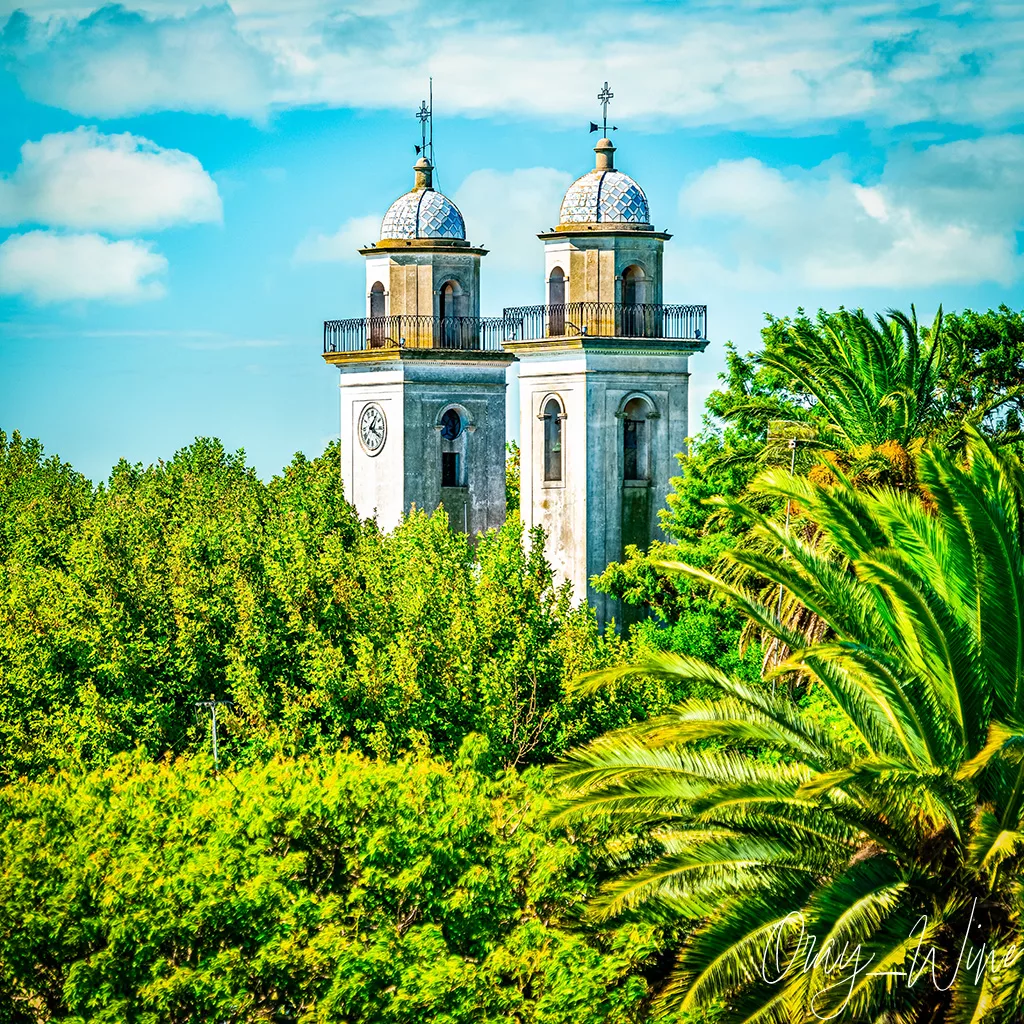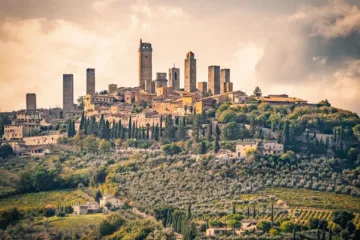
Uurguay, the land of gauchos and grilled meat, is located between Argentina and Brazil. It is South America fourth largest wine producer. Much of the country’s interior faces heavy humidity and subtropical temperatures, making winegrowing difficult. However, it is a country with a growing reputation regarding wine production. Let’s see why.
Uruguay winemaking history: a brief overview
A very young country in terms of wine production
The country’s winemaking history is very new, dating back to 1870, when vineyards were planted by immigrants, primarily Basques and Italians. This heritage of ‘peasant’ smallholdings persists, with vineyards averaging little more than 5 hectares in size. There are around 3500 grape growers in all. Wine was originally produced for local use, and with half of the country’s population living in Montevideo, four-fifths of the vines are in nearby Districts (called ‘Departmentos’). Canelones and Colonia are the main ‘Departmentos’.
The Impact of Mercosur on Uruguay wines
With the establishment of Mercosur at the end of the 1980s, Uruguayans knew that they would have to safeguard their wine business from both Chilean and Argentinian imported wines in order to sustain the local wine industry. Indeed, at the time, Chile and Argentina had lower production costs, which could have been disastrous for Uruguayan wineries.
The INAVI three steps plan
To help better protect its producers from outside competition, the Uruguayan National Institute for Viticulture (INAVI) launched a three-pronged strategy. First, growers were encouraged to cultivate vinifera varieties rather than the American grape varieties or hybrids that dominated the country at the time.
Secondly, maketing campaigns targeted the Uruguayans in order for them to feel proud of local wines were urged to be proud of the local wines emphasizing their purity and ‘naturalness’.
Finally, despite limited promotional resources, efforts were made to expand into foreign markets. A great deal of effort was placed on attempting to capture the Brazilian wine market, which was suffering from a scarcity of domestic red wines. It is worth noting that the Brazilian market remains by far the most important export market for Urugayan wine production (accounting for more than 60% of total wine export).
The distinctive features of Uruguayans vineyards
While vineyards can be found across the country, the majority are in the south (near the Rio de la Plata estuary) or the east (along the Atlantic coast). Noticeably, most Tannat plantings are located a stone’s throw from the Rio de la Plata and benefit from the sea breeze throughout the year. This humidity helps to make the tannins of Uruguayan Tannat “much more delicate than elsewhere”.
The Canelones District vineyards
The Canelones District is located just north of Montevideo’s southern shoreline and the capital city. It is one of the most important wine-producing regions in the country. This region has more than 60% of the country’s commercial vineyards and the majority of the producers. The Maldonado Region, located east of Montevideo on the Atlantic Coast and near the famed coastal resort town of Punta del Este, is another key sector. Maldonado, recognized for its rocky soils, chilly temperature, and a well-known wine tourism route, has over a dozen wineries.
The Colonia District vineyards
The Colonia District, located in the southwest of the country near the Rio de la Plata estuary, is one of Uruguay’s ancient wine production regions and a prominent region for Carbernet Sauvignon.
Other wine regions of particular interest
Recent plantings in the Cerro Chapeu region on the Brazilian border, as well as El Carmen and Carpinteria in the country’s center, are of particular significance. The soils are poorer in these three examples, and the diurnal temperature variance is greater.
Uruguay climate: ideal for qualitative winemaking

The Climate of the Uruguay is influenced by the Atlantic, with both rainfall and heat summation being similar to that of Bordeaux. Humidity can be excessive so the Lyre vine training system is very popular. High soil fertility has resulted in excessive yields although the more serious producers are addressing this.
Uurguay vinegrowing soils
Most of the vineyards lie on deep clay soils on gently rolling hills to the North of Montevideo, but there are vineyards in 16 out of the 19 country’s Departmentos.
Tannat, Uruguay’s emblematic grape variety
The vast majority of Uruguay’s wine grapes are vinifera. Tannat is by far the most popular grape variety. This robust and tannic red grape was brought here from the French and Spanish Basque Country (through Argentina). Tannat is believed to account for almost 25% of the country’s total vineyard area. Tannat is also called as ‘Harriague’ in Uruguay, after Pascual Harriague (1819-1894), a Frenchman who helped spread the vine throughout the country.
Understanding of Uruguayan Tannat
For better quality wines the dominant grape is Tannat. Tannat, with blue-black berries that contain more seeds than other grape varieties, is rich in astringent tannins: a dominant characteristic that gave it its name (the name Tannat being derived from the word ‘Tannins’). Tannat was introduced to Uruguay via Argentina and made with increasing enthusiasm and expertise. As in France, Uruguayan producers have learned to manage the naturally high tannin content of the grape. Tannat’s high levels of color and tannin make it appear opaque ruby in the glass. Today, Tannat accounts for 36% of plantings of noble varieties.
Distinctive features of Uruguayan Tannat
For better quality wines the dominant grape is Tannat. Tannat, with blue-black berries that contain more seeds than other grape varieties, is rich in astringent tannins: a dominant characteristic that gave it its name (the name Tannat being derived from the word ‘Tannins’). Tannat was introduced to Uruguay via Argentina and made with increasing enthusiasm and expertise. As in France, Uruguayan producers have learned to manage the naturally high tannin content of the grape”.

Other grape varieties cultivated in Uruguay
Albarino was introduced to Uruguay in the early 2000s and is thought to have enormous potential, particularly along the Atlantic coast where the environment is similar to that of Galicia.
Other main grape varieties are Merlot (roughly 10%), Cabernet Sauvignon (roughly 6%) and Cabernet Franc (roughly 7%).
The white wines tend to be made from Chardonnay (7%) and Sauvignon Blanc (6%).
Black muscat is also widely grown and used to produce rosé wines, much of which is cosumed domestically or exported to Brazil.
The Uruguayan VCP and VC Wine categories explained
Wines are divided into two classes, VCP (‘Vino de Calidad Preferente’) and VC (‘Vino Comùn’).
VCP wines must be produced from vinifera grapes and marketed in 75cl or smaller bottles. They account for around one-tenth of total wine output.
VC wines, which are sold widely in demijohns or tetrapacks, are predominantly rosé wines based on Muscat Hamburg grapes.
Food and Wine pairing with Uruguayan wines made from Tannat
Traditionally, Uruguayans enjoy the powerful and concentrated red wines made from Tannat with the local cuts of beef, very marbled, a fat that melts when cooking under the embers, heightening aromas and fragrances. But, the Tannat rich aromas of black currant and red plum can also be successfully paired with marinated meats and barbecue grilled plates.
Uruguay’s intrinsic qualities has recently attracted investments
A number of Joint Ventures formed by international wine conglomerates such as Jean-Claude Boisset of Burgundy (with Pisano), Bernard Magrez of Bordeaux (with Juanico), and Freixenet of Spain (partnering with Carrau for sparkling wine production) have demonstrated international interest in Uruguayan wines.

Follow me on my Social Media
Wine is a gourmet treasure, do not abuse alcohol!
None of this content has been sponsored
I did not receive any gifts or free samples that could be related to this article


